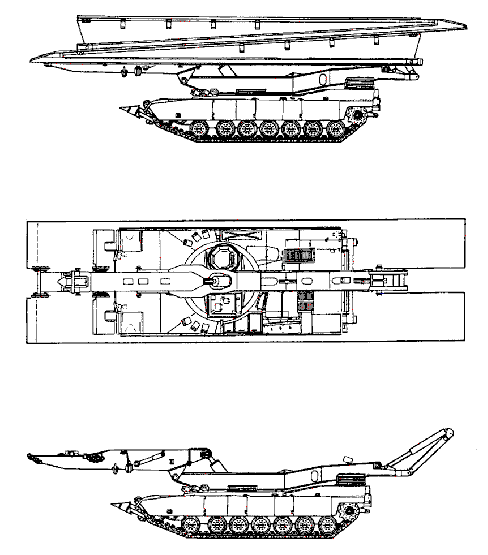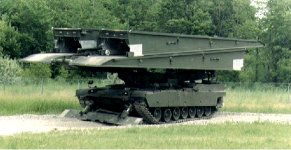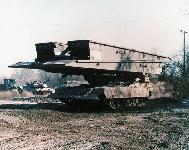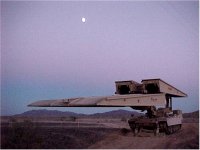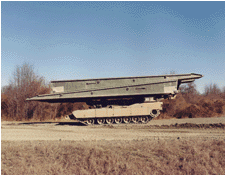 The Fiscal Year 2001 Army budget request included decisions to restructure or "divest" a number of programs in order to provide some of the resources to support its transformation to achieve the ambitious deployment goals outlined in the October 1999 Army Vision. The restructured programs are the Crusader and the Future Scout and Cavalry System. The "divestitures" include Heliborne Prophet (Air), MLRS Smart Tactical Rocket (MSTAR), Stinger Block II, Command and Control Vehicle (C2V), Grizzly, Wolverine, and the Army Tactical Missile System Block IIA. Funding for these programs was reallocated to fund the Army Vision transformation strategy.
The Fiscal Year 2001 Army budget request included decisions to restructure or "divest" a number of programs in order to provide some of the resources to support its transformation to achieve the ambitious deployment goals outlined in the October 1999 Army Vision. The restructured programs are the Crusader and the Future Scout and Cavalry System. The "divestitures" include Heliborne Prophet (Air), MLRS Smart Tactical Rocket (MSTAR), Stinger Block II, Command and Control Vehicle (C2V), Grizzly, Wolverine, and the Army Tactical Missile System Block IIA. Funding for these programs was reallocated to fund the Army Vision transformation strategy.
The Wolverine (Formerly the Heavy Assault Bridge) is an armored vehicle designed to carry, emplace, and retrieve an assault bridge capable of supporting 70 ton loads such as the M1A2 main battle tank. The Wolverine is a combat support system which integrates advanced bridging, hydraulic and electronic control capabilities into a single survivable system. Wolverine fills the need for a combat gap crossing capability with the same mobility, survivability, and transportability as the M1 Abrams tank. WOLVERINE is to be a one for one replacement for the Armored Vehicle Launched Bridge (AVLB) in select heavy divisional engineer battalions, armored cavalry regiments and heavy separate brigades.
WOLVERINE consists of an M1 Abrams tank chassis modified to transport, launch and retrieve a Military Load Class (MLC) 70 bridge across gaps up to 24 meters wide. WOLVERINE will be air-transportable in the C-5A aircraft and will be comparable in mobility and survivability to the Abrams tank. A crew of two MOS 12B will operate the system. WOLVERINE will provide the Army's Digital Division with mobility support (i.e. assault bridging) for Decisive Operations IAW Army Vision 2010.
The WOLVERINE provides the dominant maneuver force with the capability to span gaps up to 24 meters (m) with little or no loss in momentum. The bridge, made of four interchangeable sections, is 26 m long, 4 m wide, weighs 10,886 kg (12 tons), and is required to permit crossing of a heavy task force consisting of Military Load Class (MLC) 70 vehicles moving at 16 km/hr. The hull will be based on the future M1A2 System Enhancement Package (SEP) chassis modified to support a two-man crew and the bridge launcher assembly. The crew can launch the bridge while under armor protection from either crew position in five minutes after reaching the crossing site and can retrieve it from either end in ten minutes. The WOLVERINE will retain significant compatibility with the M1A2 fleet. The dominant maneuver force will support the WOLVERINE's bridging operations with ongoing direct and indirect fire and air support. The WOLVERINE will directly replace the existing Armored Vehicle Launched Bridge in selected engineer companies of mechanized battalions, armored cavalry regiments, and heavy brigades.
WOLVERINE is employed as an integral part of the M1A2 SEP/M2A3 equipped digital maneuver battalion task force. WOLVERINE as part of the Breach Force and supported by friendly direct and indirect fires, will provide a 24 meter one way gap crossing capability for MLC 70 normal crossing loads with minimal preparation and with little or no loss of task force momentum. The bridge structure will be durable enough to withstand 5000 crossings of 70-ton vehicles and be launched and retrieved at least 2200 times without major repair.
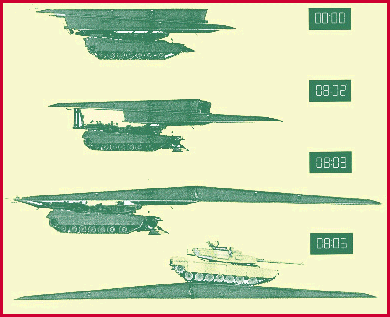
 Following a significant increase in the WOLVERINE program's procurement
objective to the currently planned 465 units, the Army's Acquisition Executive in a
memorandum dated June 4, 1996, notified OSD that the Army designated the
WOLVERINE an ACAT II program and a covered system for LFT&E. The
program was added to the T&E oversight list in December 1996 for LFT&E only.
This system is not an operational test and evaluation oversight program. MSII for the
WOLVERINE program, which occurred in June 1992, predated the assignment of
the system to the oversight list. DOT&E participated in the WOLVERINE LFT&E
Integrated Process Team (IPT) beginning in May 1996 and approved the completed
LFT&E strategy in March 1997. Dedicated LFT events began in 4QFY97 and
extended through 3QFY99.
Following a significant increase in the WOLVERINE program's procurement
objective to the currently planned 465 units, the Army's Acquisition Executive in a
memorandum dated June 4, 1996, notified OSD that the Army designated the
WOLVERINE an ACAT II program and a covered system for LFT&E. The
program was added to the T&E oversight list in December 1996 for LFT&E only.
This system is not an operational test and evaluation oversight program. MSII for the
WOLVERINE program, which occurred in June 1992, predated the assignment of
the system to the oversight list. DOT&E participated in the WOLVERINE LFT&E
Integrated Process Team (IPT) beginning in May 1996 and approved the completed
LFT&E strategy in March 1997. Dedicated LFT events began in 4QFY97 and
extended through 3QFY99.
| MS 0: MS I/II: Program Stop: Revalidated MS I/II: LRIP-T: LRIP: IOT: MS III (TC STD): FUE: |
7 Feb 83 18 Oct 90 Nov 90 25 Jun 92 17 Jul 96 9 Apr 98 Feb 00 Aug 00 Sep 00 |
The program is in Low Rate Initial Production (LRIP) or MS IIIA Phase and funded for First Unit Equipped (FUE) in Sep 00 to 4th ID. Initial Operational Capability (IOC) is Oct 00. General Dynamics Land Systems (GDLS) finalized their LRIP contract negotiations under the M1A2 SEP Production Contract with the Government, with contract awarded 9 Apr 98. Under this contract, GDLS is to fabricate six prototypes for delivery to the government in the Mar-Aug 99 timeframe.
|
Basis of Issue Plan (BOIP): |
12 per En Bn Hvy Div &
Corps (M) 6 per En Co, ACR & SEP Bde 3 per ACR SQDN |
Specifications | |
| WOLVERINE System | |
| Crew | 2 Soldiers (12B MOS) |
| Weight | 68.7 TONS |
| Powerpack | AGT-1500 Turbine X1100 Trans |
| Launch Power Unit | Integrated APU Powers Launcher Silent Watch |
| Fire Protection | Automatic 3 Zone Extinguisher System |
| Electrical System | 24 Volts |
| Tread | 112.0 in. |
| Track Width | 25.0 in. |
| Vertical Obstacle | 36.7 in. |
| Trench Crossing | 106 in. |
| Ground Clearance | 19.0 in. |
| Fording | 48 in. (w/o kit) |
| Speed |
|
| Cruising Range | 260 Miles |
| Heavy Assault Bridge System | |
| Gap Crossing Length | 24.0 M (26 Meter Length) |
| Mission Load Class [MLC] | 70.0 TONS |
| Crossing Speed | 13-16 kph |
| Durability | 5000 MLC70 Crossings |
| Launch Time | Less than 5 min. |
| Recovery Time | 10 Minutes (5 Min. to Engage, 5 Min to store in Travel Mode) |



